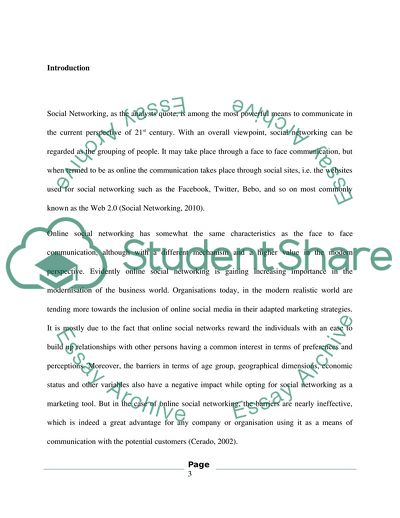Cite this document
(Social Networking in Tourism Marketing Coursework, n.d.)
Social Networking in Tourism Marketing Coursework. https://studentshare.org/marketing/1747766-with-reference-to-best-practice-from-your-experience-explore-how-social-networking-and-particular-of-facebook-and-twitter-can-be-used-for-tourism-marketing
Social Networking in Tourism Marketing Coursework. https://studentshare.org/marketing/1747766-with-reference-to-best-practice-from-your-experience-explore-how-social-networking-and-particular-of-facebook-and-twitter-can-be-used-for-tourism-marketing
(Social Networking in Tourism Marketing Coursework)
Social Networking in Tourism Marketing Coursework. https://studentshare.org/marketing/1747766-with-reference-to-best-practice-from-your-experience-explore-how-social-networking-and-particular-of-facebook-and-twitter-can-be-used-for-tourism-marketing.
Social Networking in Tourism Marketing Coursework. https://studentshare.org/marketing/1747766-with-reference-to-best-practice-from-your-experience-explore-how-social-networking-and-particular-of-facebook-and-twitter-can-be-used-for-tourism-marketing.
“Social Networking in Tourism Marketing Coursework”. https://studentshare.org/marketing/1747766-with-reference-to-best-practice-from-your-experience-explore-how-social-networking-and-particular-of-facebook-and-twitter-can-be-used-for-tourism-marketing.


